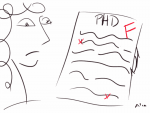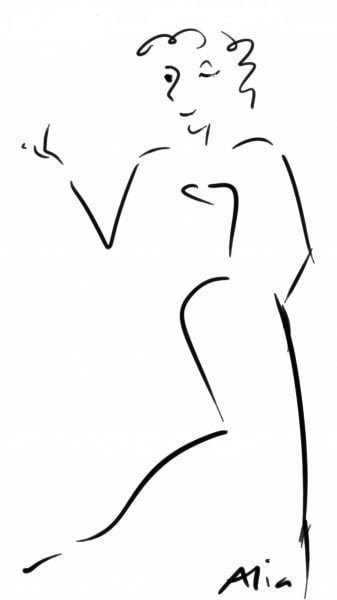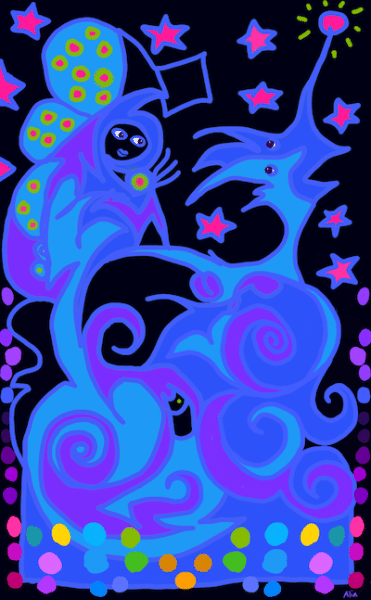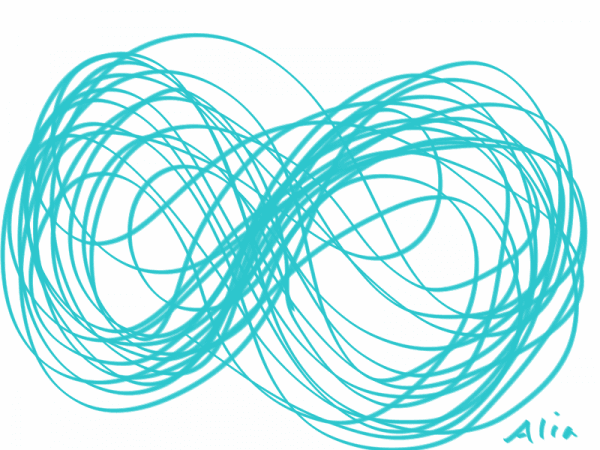Breath is pretty miraculous–it keeps us alive, for one. And it helps us thrive.
A physical therapist was telling me about a mutual friend who was depressed, sitting home staring at the TV. She burst out, “The sympathetic nervous system runs down either side of the spine. You can google sympathetic chain,” she added. “You’ll get a picture showing it going across. It goes onto the other side of the spine, and it will show what organs it links to.”
I did—here’s a picture
http://droualb.faculty.mjc.edu/Course%20Materials/Physiology%20101/Chapter%20Notes/Fall%202007/figure_11_01_labeled.jpg .
I also got really interested. We were talking on Skype, so I flipped on my call recorder. This is a transcription of our convo.
“This sympathetic system gets regulated by physical thoracic movement. Movement in the thoracic area of your spine. The number one way that movement happens is proper breathing. So when you breathe correctly, then you have a constant sort of massage from the slight movement happens in that area.
“When people sit at a desk, for example. All day they hunch over and look at their computer screen—or if they have experienced a variety of things in their life, pain, increased levels of stress and anxiety, traumatic experiences, injuries? They will also adopt postures that—either sitting or these extreme postures—close down the thoracic spine, so you end up breathing only at the bottom, front part of your lungs (or in some postures the top front).
“So what happens is you don’t get that massage to the back of that sympathetic nervous system region. A lot of people — most of us in this country, don’t get that. You wonder why so many people are on anti-anxiety meds, can’t sleep very well, have poor relationships and a lot of stress. It’s purely based on our posture!”
Of course, all I think about is belly dance. I said, “That’s very interesting. Because I’m connecting all of these benefits that you get from oriental dance practice with every day life. It’s not just, “Oh, it’s a nice dance.” It’s like, “This is something that is going to transform your life, just by doing it.”
And this is one of the ways—because when you do the dance right, you allow the breath to be integrated properly. Now you’re just telling me exactly what is the benefit of this breath, and what the purpose of it is. That’s very exciting.”
She said, “Yes, isn’t it interesting? We really take breathing for granted in this country; it’s extremely under-appreciated. If you look at a lot of other cultures, eastern … Look at Yoga, I’m sure dance, and any kind of meditation, Tai Chi, Pilates, how do they all come back to the breath? It’s always an underlying theme and we completely ignore that. We spend a lot of time here holding our breath and breathing with very little inflation.”
I said, “Yes, breath is included in every mind body practice. The focus is on the breath and somehow, we forgot about all that or else, we just do it, in terms of, our practice and we don’t bother doing it in the rest of our life, or like in oriental dance, it’s never been integrated, or rarely.”
And here let us look at the Breath info from Spark that links Oriental dance with all the mind-body breath practices… Thanks to Zara’s Zouk and Dandash for the workshop in which I learned this!
My PT friend continued, “I have two things to say. One: If your body is able to breathe correctly and you can fully inflate your lungs in the correct way, then in theory, the rest of your body is actually working really well, because in order for your lungs to fully inflate, you need to have full trunk stability, which means that everything else is, sort of, working perfectly.
“Two: I would be willing to bet that in order to fully grasp and fully utilize the breath within your dance practice, for example, you would only be able to actually do that, if you were fully integrating breath throughout your day. You can’t sort of turn your lungs on and off, right? You have to be able to use them fully, all the time. You almost have to make it a daily practice in order to make it part of your artistic practice and your physical practice.
“And what is the number one activity that we do all day and all night? BREATHE! We always breathe… When you fix your breathing, you fix so many other things, because you’re always going to be doing it. It’s not like you can take time off and just not breathe.”
So there you have it.
Keep breathing. The breath massages and regulates the sympathetic nervous system. Bring your dance practice breath into your everyday life. Sit so you can breathe, and breathe into your computer work, car driving, etc.
And you know, I thought of another cool thing about our dance. So many movements from it roll and massage this same thoracic area of the spine. Undulations, anyone? Chest circles and infinities? Shoulder shimmies? We really do have a magic dance here, folks. Much more magic than most people imagine.
Let’s dance! And while we do it, let’s remember and visualize these movements and breath awakening and soothing the sympathetic nervous system, all the organs to which it connects, and the rest of bodies and our lives. Here’s some music for that…
Love,
Alia
In case you missed last week, come take a look at my video–and at the Great Creativity Toolkit!
PS I’ll be presenting How to Write a Blog Post, a 90 minute webinar, on Saturday Oct 16 at 2pm Eastern time. Save the date!
Is there interest in a full-on writing class? I have taught writing for decades.
Our next FUN Class Deep Dive will be Visionary Veil–Beyond Tricks: How to improvise with the veil as an expressive partner.






No comment yet, add your voice below!